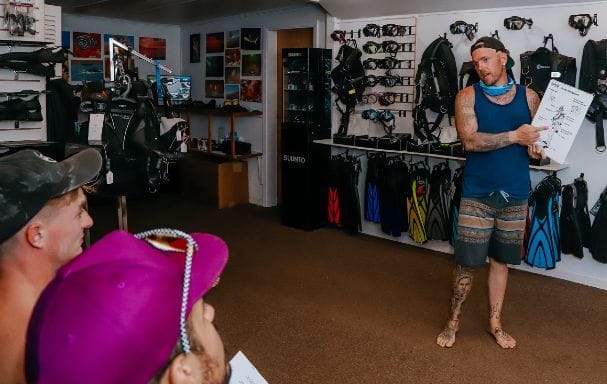Does Maui Have an Active Volcano?
Without volcanos, the Hawaiian Islands wouldn’t exist. The island chain we recognize today was formed over millions of years by constant volcanic activity. And it is this same pocket of molten lava that the islands continue to sit on today. So, does that mean that Hawaii, and Maui specifically, have active volcanos?
Well, the U.S. Geology Survey defines an active volcano as one that has erupted in the last 10,000 years. By that definition, Hawaii has five such volcanos, and while most are on other islands, Maui has one itself, Haleakala. But you don’t need to worry too much about a volcanic eruption interrupting your Maui vacation, Haleakala hasn’t had noticeable activity since at least 1600.
But what about other Hawaiian volcanos? Are any actively erupting now? And how can you witness volcanic activity yourself and what are the true risks of an eruption? Be sure to read on below for the answer to all of these questions and more.

Photo by Nick Michael
How Many Active Volcanos Does Hawaii Have?
The Hawaiian Islands have six active volcanoes, Kilauea, Maunaloa, Mauna Kea, Hualalai, Haleakala, and Loihi. The last volcano listed, Loihi, has yet to surface from underwater, and at its current eruption rate, it won’t emerge from the sea for over 200,000 years. So, in just a few hundred thousand years, there will be a new Hawaiian Island, proving that the landscape of the area is constantly changing, even today.
Hawaii Island is where you will find the most active volcanos, Maunaloa (or Mauna Loa) and Kilauea. Maunaloa has erupted frequently in the last 100 years, with the last eruption occurring in 1984. Kilauea has recently experienced an extended period of activity as well, stretching nearly 35 years from 1983 to 2018.
These volcanos are often the largest geographical features of their islands. One example would be Maunaloa, which is deceptively large, its footprint takes up nearly half of the island, meaning visitors are often standing on the volcano without even realizing it. On Maui, Haleakala takes up a massive amount of the island’s eastern edge.
Places to See Volcanic Activity and Things to Do When Visiting
In Hawaiian culture, the peaks of mountains are sacred places where the realms of gods and goddesses can mix with that of humans. Because of this reason, there are frequently ceremonies that take place on the summits of volcanos, and some (including Haleakala) even have shrines built on them for worship purposes. Due to this, it is important to respect not only the natural beauty of these places but this special cultural aspect as well.
On Maui, visiting Haleakala for the sunrise has become a popular activity. Many make the morning pilgrimage to the summit for the truly awe-inspiring view and spend the rest of the day exploring the national park in which Haleakala is located.
Of course, one of our favorite ways to witness the beauty of Hawaii’s volcanic landscape is actually underwater. Through scuba diving, you can start to truly comprehend how amazing the island’s formation is. In addition, some of the most spectacular diving environments have been shaped by unique volcanic features. One of the most popular dives we offer is to the Lanai Cathedrals, whose massive lava tubes, up to two stories in height, must be seen to be believed.
Above the water, you’ll find Hawaii Volcanos National Park, which is one of the few places in the world where you can get a chance to see volcanic activity up close and personal. The national park encompasses Mauna Loa and Kilauea as they rise from the ocean to nearly 14,000 feet at their peak. Visitors are able to learn more about the geology of these volcanoes as they maneuver around the rims and experience the rugged volcanic terrain through a variety of hikes or driving tours.
Are Hawaiian Volcanoes Risky?
In short, the danger of an eruption is always present, but thanks to modern monitoring technology and warning systems, the risk to visitors and locals is very minimal. For example, when Kilauea was actively erupting in recent years, the only serious injury was to a man hit with a rock while sitting on his balcony.
In addition, Hawaiian volcanoes erupt in a manner that is generally less violent when compared to other styles of volcanic eruptions. The lava flows are famously gentler, produce less ash, and have magma that moves more slowly.
This doesn’t mean that Hawaiian volcanoes are risk-free, however, as hazardous conditions can still exist. For example, when visiting new lava deltas, it is important to remember that they are unstable and can be prone to collapse.
We’re Always Here to Help!
So, there you have it, almost everything there is to know about Hawaii’s volcanoes. If learning about places like Haleakala has inspired a thirst for more in-depth volcano exploration, be sure to reach out to us at Dive Maui and set up a tour of one of the area’s underwater lava seascapes today! A visit to the Lanai Cathedrals should be on everyone’s bucket list and is also one of the best ways to see the wonder of Hawaii’s volcanic majesty in person!






